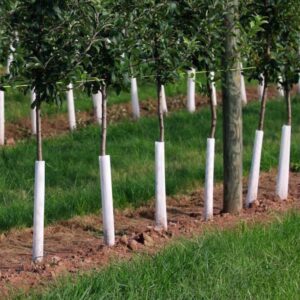Winter Fruit Tree Care
go.ncsu.edu/readext?769253
en Español / em Português
El inglés es el idioma de control de esta página. En la medida en que haya algún conflicto entre la traducción al inglés y la traducción, el inglés prevalece.
Al hacer clic en el enlace de traducción se activa un servicio de traducción gratuito para convertir la página al español. Al igual que con cualquier traducción por Internet, la conversión no es sensible al contexto y puede que no traduzca el texto en su significado original. NC State Extension no garantiza la exactitud del texto traducido. Por favor, tenga en cuenta que algunas aplicaciones y/o servicios pueden no funcionar como se espera cuando se traducen.
Português
Inglês é o idioma de controle desta página. Na medida que haja algum conflito entre o texto original em Inglês e a tradução, o Inglês prevalece.
Ao clicar no link de tradução, um serviço gratuito de tradução será ativado para converter a página para o Português. Como em qualquer tradução pela internet, a conversão não é sensivel ao contexto e pode não ocorrer a tradução para o significado orginal. O serviço de Extensão da Carolina do Norte (NC State Extension) não garante a exatidão do texto traduzido. Por favor, observe que algumas funções ou serviços podem não funcionar como esperado após a tradução.
English
English is the controlling language of this page. To the extent there is any conflict between the English text and the translation, English controls.
Clicking on the translation link activates a free translation service to convert the page to Spanish. As with any Internet translation, the conversion is not context-sensitive and may not translate the text to its original meaning. NC State Extension does not guarantee the accuracy of the translated text. Please note that some applications and/or services may not function as expected when translated.
Collapse ▲During the winter months, home orchard owners need to protect their fruit trees from rabbits and voles. Rabbits and voles can injure fruit trees by chewing the bark from the lower trunk and portions of the roots and this damage can kill or severely weaken the trees.
Keep the ground bare around the base of the trees to reduce habitat for rabbits and voles. If your trees are mulched, remember to pull the mulch back about six inches at the base of the trunk to keep the rodents away. Pick up and remove any fruit that remains beneath the trees as this can attract rodents. Always clean up fruit from the ground as part of annual fall and winter orchard cleanup.
Rodent guards are useful around the lower trunk of your fruit trees. These may be commercial plastic wrap guards or construct your own guards using quarter inch hardware cloth. The guards should cover the trunk to a height of 18 inches and encircle the trunk. Inspect the ground around the trees for tunnels in the grass or holes indicating vole activity. Use mousetraps when vole activity is noted.
Prior to spring growth, cut out dead and diseased wood, and do your annual pruning. Late February through March usually is the best time to prune.

Rodent Guards




